If you search for the “best day trips from Paris,” a trip to Giverny is sure to be among the top recommendations.
The quaint village of Giverny, situated about 50 miles (80 kilometers) from Paris in Normandy, is best known as the home of Impressionist painter Claude Monet, where he lived for over 40 years. Many of Monet’s iconic works, including the renowned Water Lilies series, were inspired by the scenes from his beautiful gardens.
Monet resided in Giverny until his passing in 1926, and today, his vibrant former home and gardens are open to the public as a museum. A quick glance at photographs of this location reveals why Giverny is such a favored day trip from Paris.
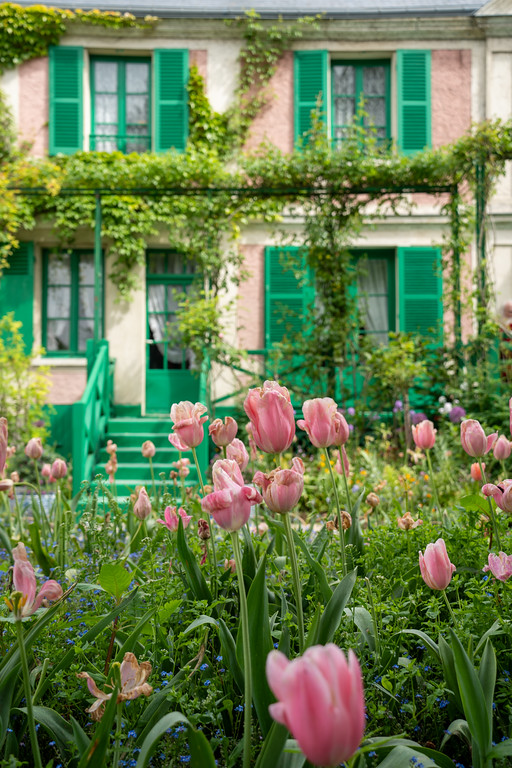
During my latest trip to Paris, I finally had the chance to visit Giverny myself, and I gathered a wealth of information to help you plan your visit. While you can book a tour from Paris to Giverny, embarking on the journey independently offers you greater flexibility to linger in those enchanting gardens.
Read on for tips on how to make it happen!
Planning the Perfect Giverny Day Trip
When to Visit Giverny
You can visit Giverny at any time of the year. However, keep in mind that Monet’s House and Gardens are only accessible from early April to the end of October (typically, April 1 – October 31 each year).
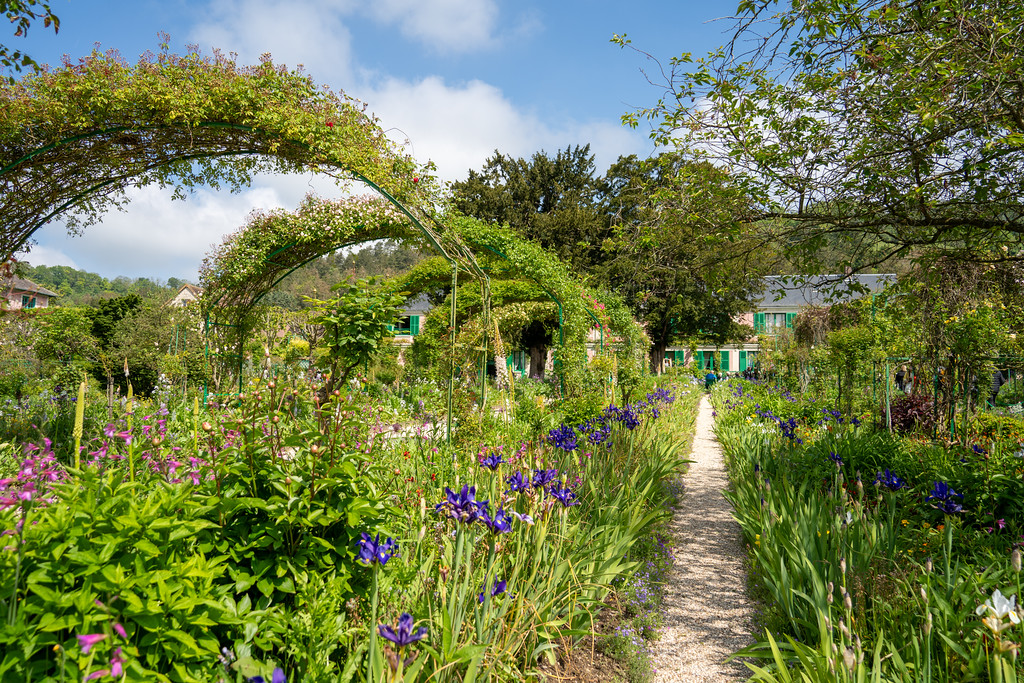
If you’re in Paris during the winter or early spring, I would not recommend making the journey to Giverny, as Monet’s House and Gardens are enclosed by walls, and there’s not much to see without entering.
From April to October, the house and gardens are open seven days a week, showcasing a variety of blooming flowers. If you have specific blooms you’d like to see, here are the approximate blooming periods:
- April: Tulips and wisteria (wisteria may bloom late in April)
- May: Wisteria (early May), irises, and rhododendrons
- June: Roses
- July: Water Lilies (from mid-July onward)
- August: Water Lilies
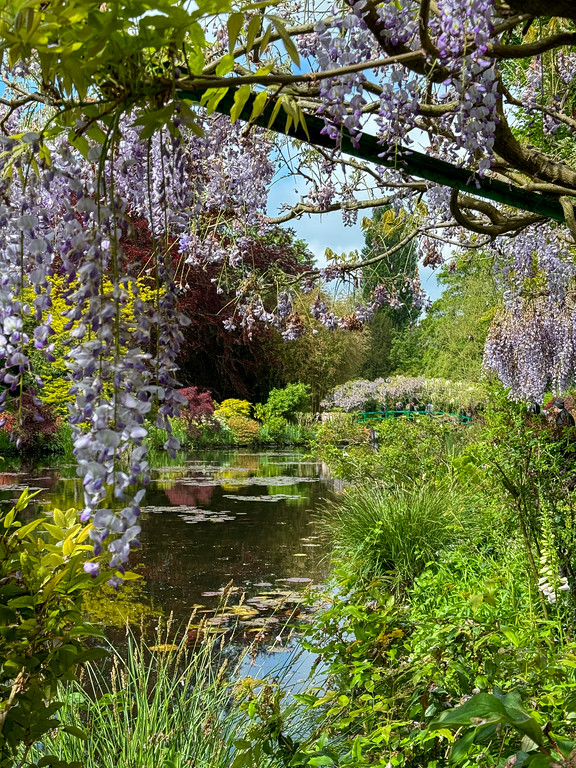
As for the best days to visit… Monet’s House and Gardens do tend to be crowded, but visiting early on a weekday will provide the least crowded experience.
Getting Tickets for Monet’s House
Managed by the Fondation Monet, this is where you should purchase your entry tickets.
While you don’t *have* to book tickets in advance for Monet’s House and Gardens, it is highly advisable to do so. If you don’t, be prepared to wait in line for at least an hour (or longer if you don’t arrive early) — and who wants to waste that precious vacation time?
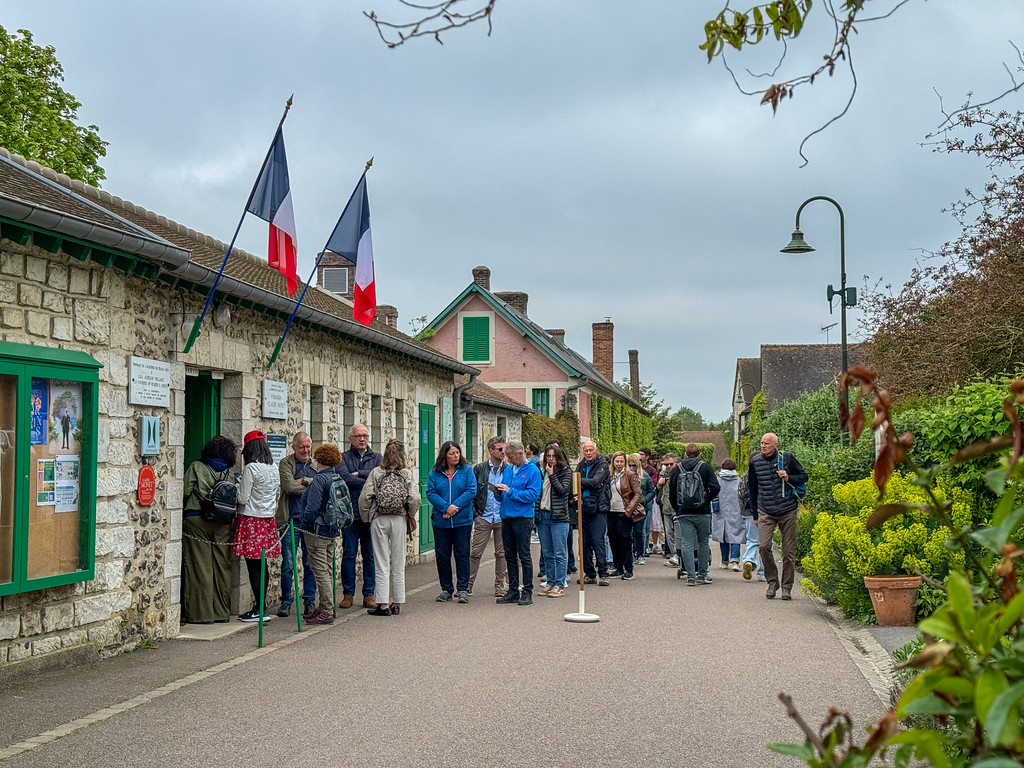
Once you’ve selected a day to visit Giverny, go online to purchase your ticket in advance. All tickets are timed and cost €11.50 for adults.
Monet’s House and Gardens are open daily from 9:30 a.m. to 6 p.m., so it’s best to verify train schedules from Paris to Vernon-Giverny before reserving a time slot. Keep in mind that it takes a bit of time to get from the train station to the entrance of Monet’s House (more on that in the next section!).
For my visit, I chose to book the 10:30 a.m. time slot, which worked perfectly for me.
After selecting your tickets and visit time, you’ll need to register on the site before finalizing your purchase using a credit card. No need to print your e-ticket – simply save it on your phone and show it when you arrive. (More information on where to enter later, as pre-purchase allows you to skip the lengthy ticket line!)
Note: If you search for “Monet’s House tickets” on Google, you’ll come across numerous sites. The best way to purchase your tickets is directly through the Fondation Monet website. Alternatively, Giverny.org also sells tickets, but those come with higher prices and extra fees.
Traveling from Paris to Giverny
Since this is a self-guided trip to Giverny, let’s discuss how to get there from Paris! The journey involves a metro ride, a train, and a bus — which may sound overwhelming, but it’s quite manageable.
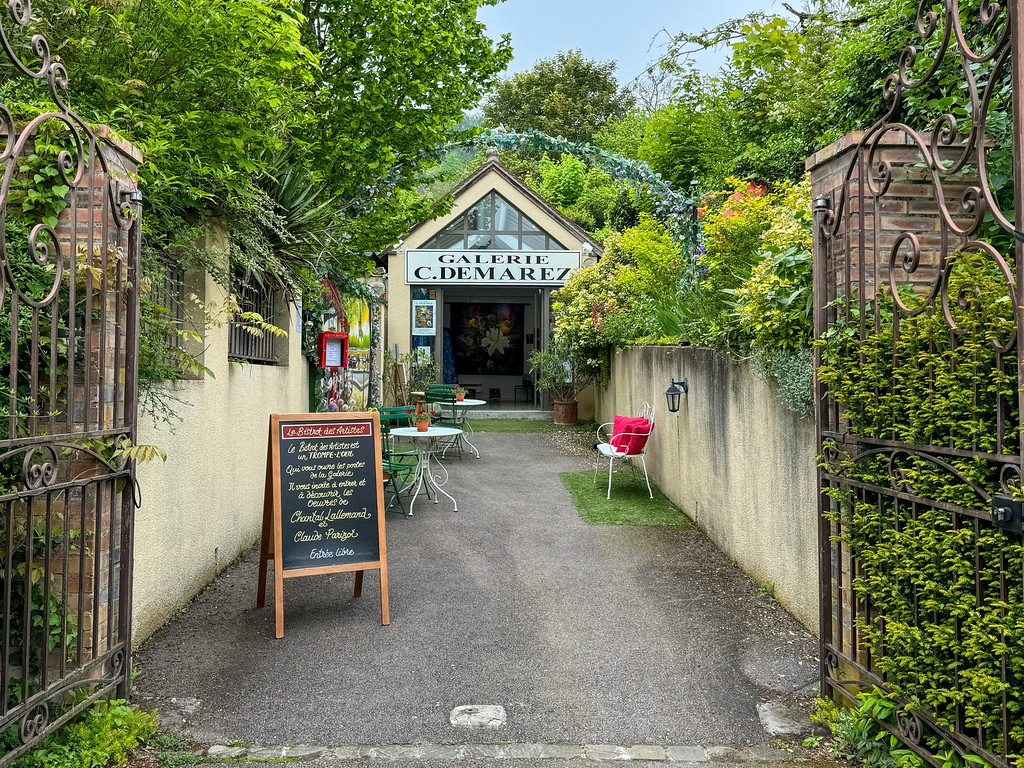
Train to Vernon-Giverny
You’ll want to take a regional TER train from Paris’s Saint-Lazare train station to Vernon-Giverny (the station is located in the village of Vernon). This is a direct train – no transfers needed – and trains run this route frequently from Paris. Saint-Lazare is accessible via several Metro lines (3, 12, 13, and 14), making it easy to reach from your accommodation.
You can purchase your ticket to Vernon-Giverny at the station using a kiosk machine or in advance using an app like Trainline. (Tickets generally don’t sell out, but booking in advance can be more convenient.)
Be sure to check train schedules prior to buying your entry ticket for Monet’s House, since the train times can vary. On my visit (with a 10:30 a.m. entry), I took the 8:14 a.m. train from Saint-Lazare to ensure timely arrival.
The train journey from Paris to Vernon takes approximately 50-60 minutes, with ticket prices typically ranging from €10 to €20 one way (pre-booked tickets are often cheaper). I decided to purchase my Paris-Vernon ticket in advance but held off on my return ticket for more flexibility while in Giverny.
Giverny Shuttle
Upon arriving at the Vernon train station, use the pedestrian underpass beneath the tracks to access the train station itself (don’t exit through the fence adjacent to the train). Your journey isn’t finished yet, as Vernon is about 2 miles away from Giverny.
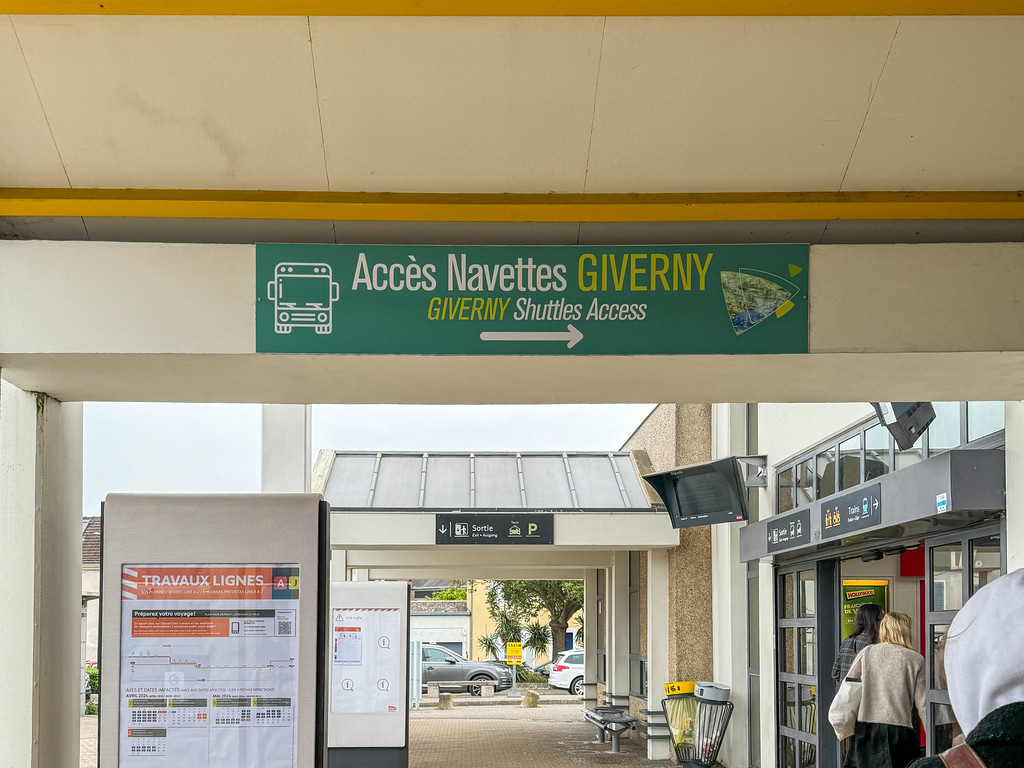
There are shuttle buses connecting Vernon and Giverny that align with train arrival and departure times from Paris, commencing around 9 a.m. After arriving at the train station, follow the signs for the Giverny shuttle – or simply walk out of the station and locate the line of buses adorned with Monet-themed artwork.
A round-trip bus ticket between Vernon and Giverny costs €10 (or €5 one way), which you can pay either in cash or by card when boarding the bus. They typically have enough buses available to accommodate demand, easing any worries about securing a seat.

The bus ride to Giverny lasts less than 15 minutes, and you will be dropped off at the village’s main public parking area. Return bus times to Vernon are available at the bus stop; I recommend taking a photo to remind yourself when to come back. (Additionally, bus schedules typically align with train times back to Paris with some buffer time included.)
Getting to Monet’s House
From the bus parking area, it’s a short 10-minute walk into the village of Giverny (a map with estimated walking times is conveniently located at the bus stop). Just follow the flow of people heading toward the main destination, as everyone is likely to be going in the same direction.
When you arrive at Monet’s House, remember, there’s no need to wait in the long ticket line at the main entrance since you’ve already purchased your ticket online. (However, if you didn’t pre-book, expect to stand in line.)
Look for signs that indicate “Porte 1” and “Porte 1bis,” directing you down a narrow path before the main ticket line. Porte 1 is for groups, while Porte 1bis is for those with a “Entree Coupe File” or “Entry With Pass” – that’s you! Towards the end of this path, you’ll find the entry gate through a stone wall, where your ticket will be scanned.
(The signs are small and easy to overlook, which is why I’m including photos for clarity!)
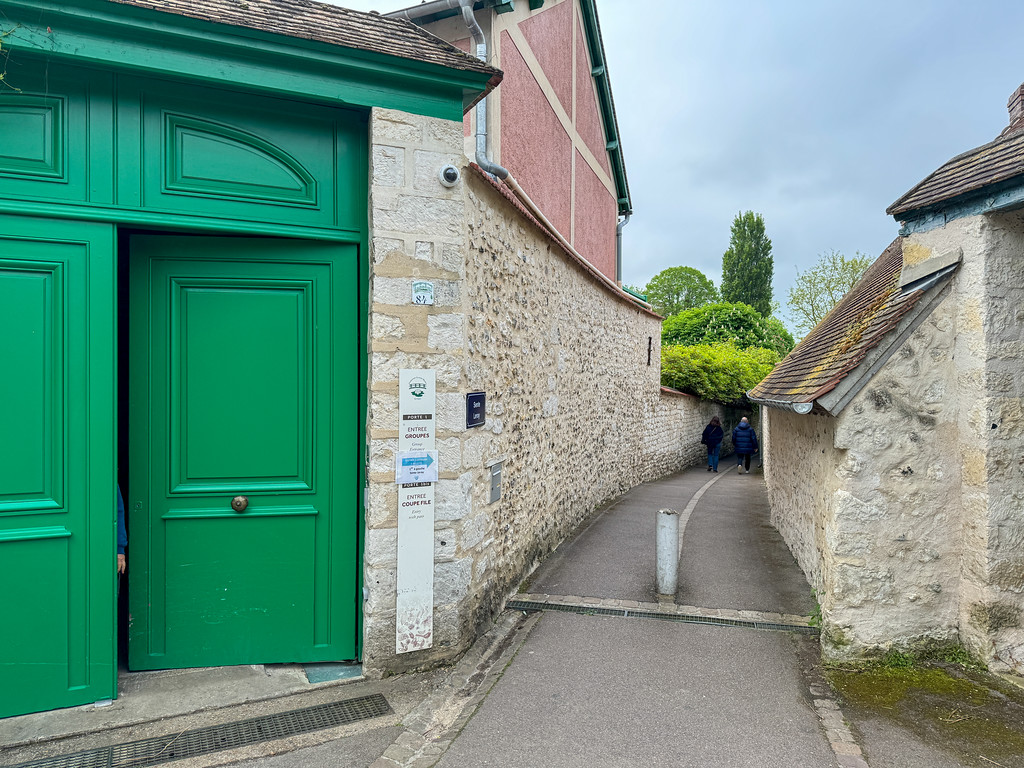
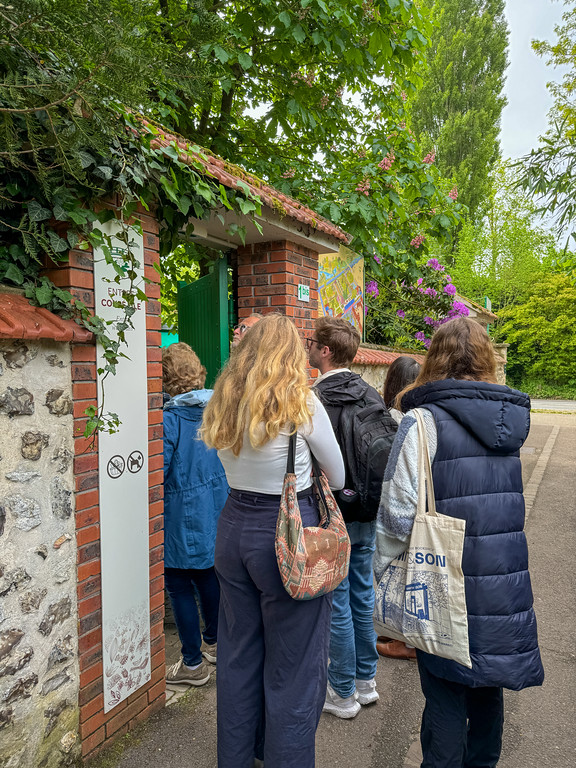
You’ll enter through the back corner of the main flower garden, known as Clos Normand, at Monet’s House, and from there, you are free to explore at your own pace!
Activities at Monet’s House and Gardens
Once inside, there are three main areas to explore: Monet’s House, the Clos Normand flower garden, and the water garden. You can visit them in any order, and without tour constraints, you can take your time as long as you’d like at each site.
Clos Normand Flower Garden
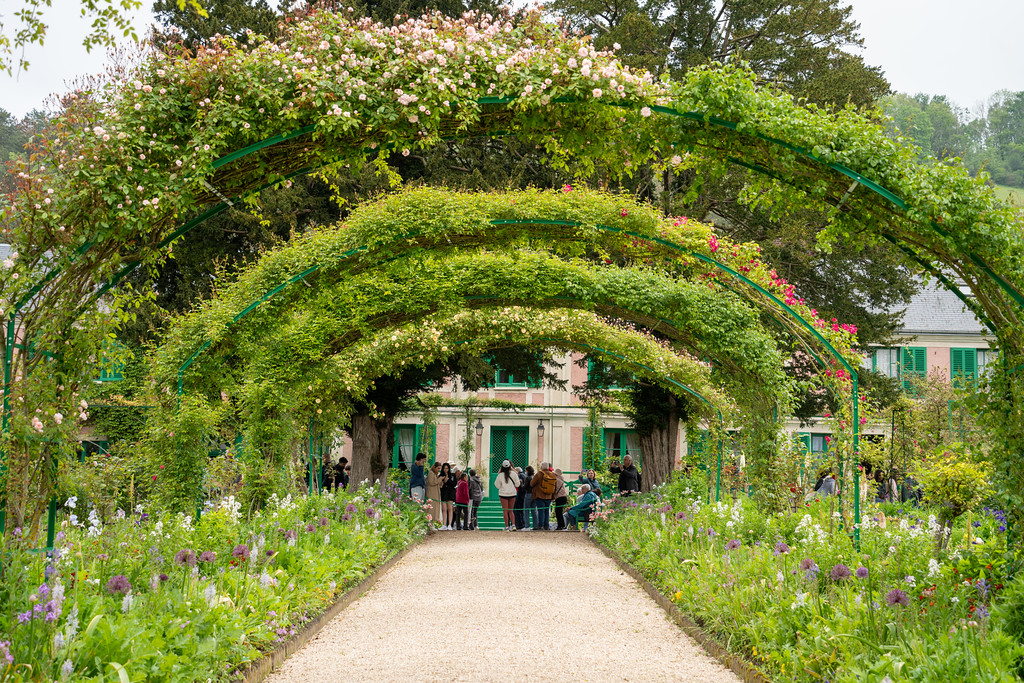
Your first stop will be the main flower garden, which is vibrant with a variety of blooms, regardless of the month. Originally, this garden accompanied the house when Monet bought it in 1883, serving as an apple orchard and kitchen garden.
Over time, Monet transformed it into a dreamlike garden filled with numerous plants and flowers. (Monet was not only a painter but also a passionate gardener!)
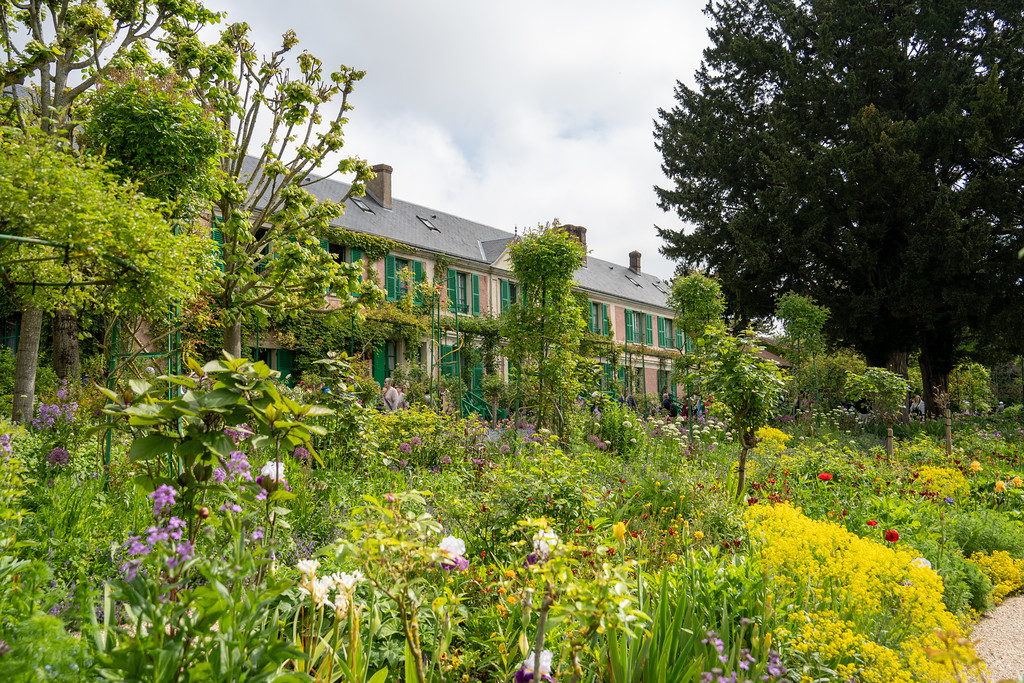
Not all pathways in this garden are open to foot traffic, so please respect any closed or cordoned-off areas. And, of course, refrain from trampling any flowers!
Monet’s House
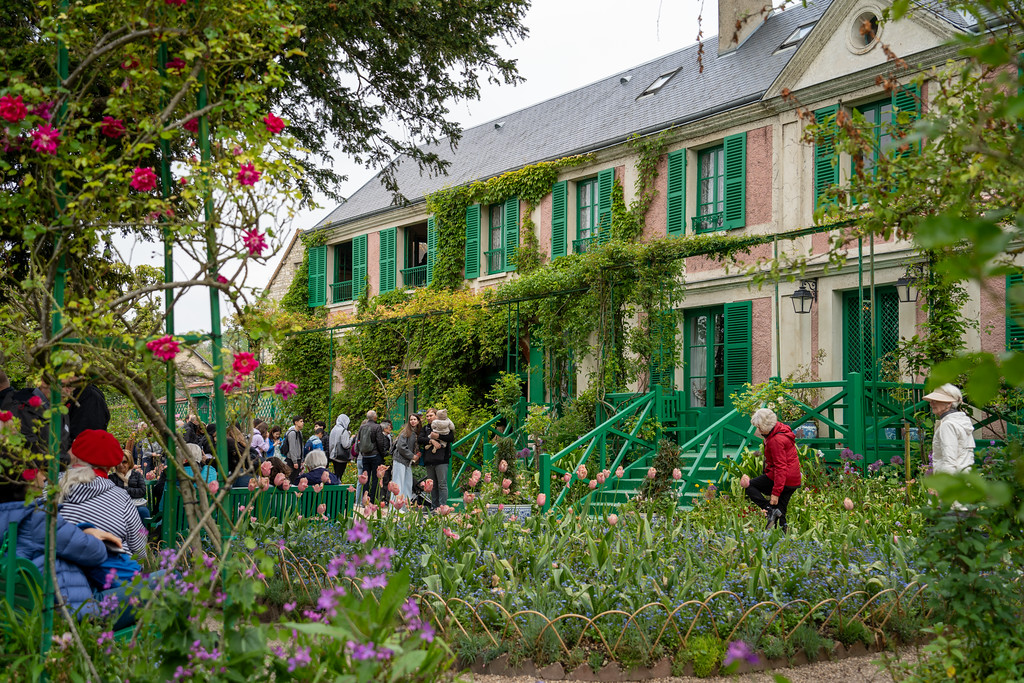
The elegant pink and green house at the head of the Clos Normand garden is where Monet lived with his second wife, Alice, and their combined eight children. Expect a line to enter the house, but it moves quickly and is certainly worth the wait.
Inside, the house is bright and inviting, primarily designed by Monet himself! Visitors can explore both floors, including restored spaces like Monet’s studio and bedroom, as well as the cheerful yellow dining room and cool blue kitchen.
The house is also adorned with art prints, showcasing both Monet’s masterpieces and other artists’ works.
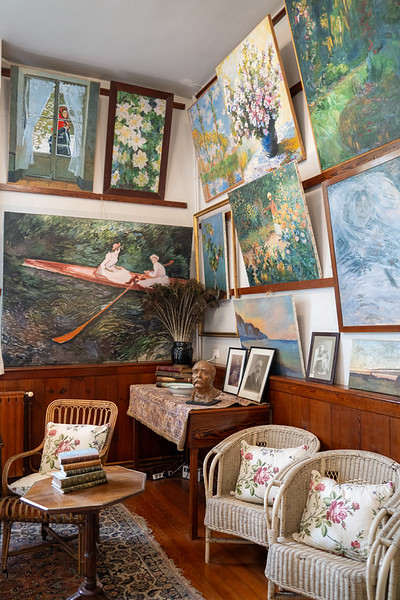
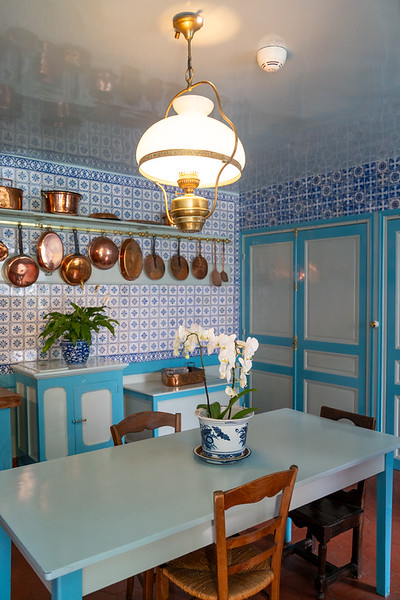
Water Garden
The most iconic part of Monet’s estate is undoubtedly the water garden, or Japanese garden, which boasts the famous water lily pond. Monet added this garden in the 1890s by channeling a small stream into it.
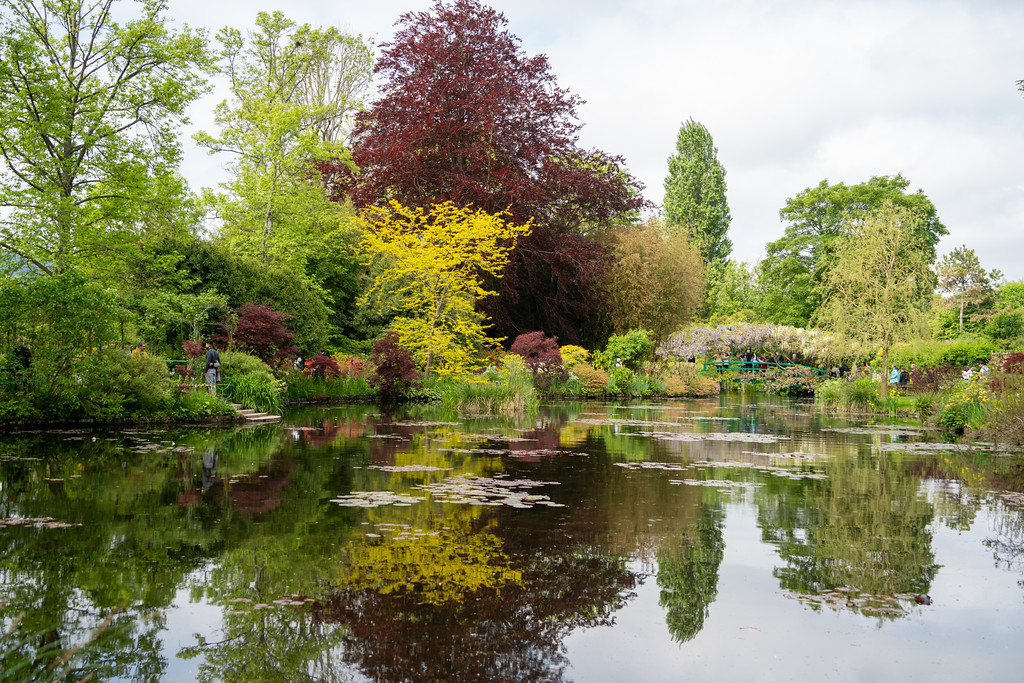
In addition to the water lily pond (which blooms only in July and August), this garden features bamboo, a Japanese bridge festooned with wisteria in spring, willows, and multiple peaceful walking paths. It can be bustling with visitors seeking the perfect photo, but its beauty is indisputable.
This is also where Monet began his famous Water Lilies series in 1897.
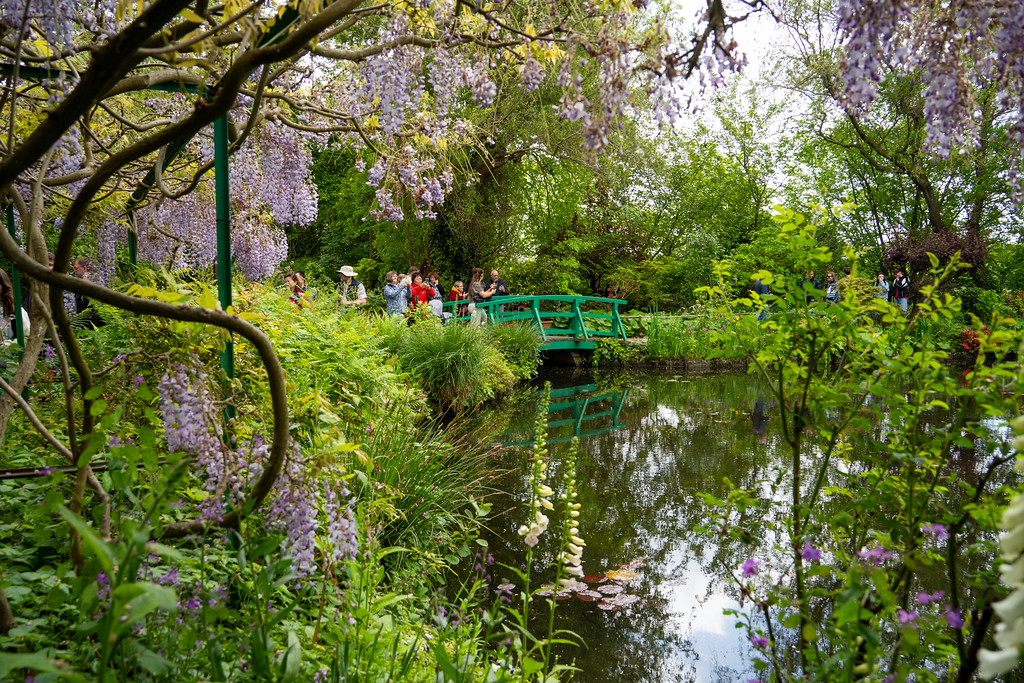
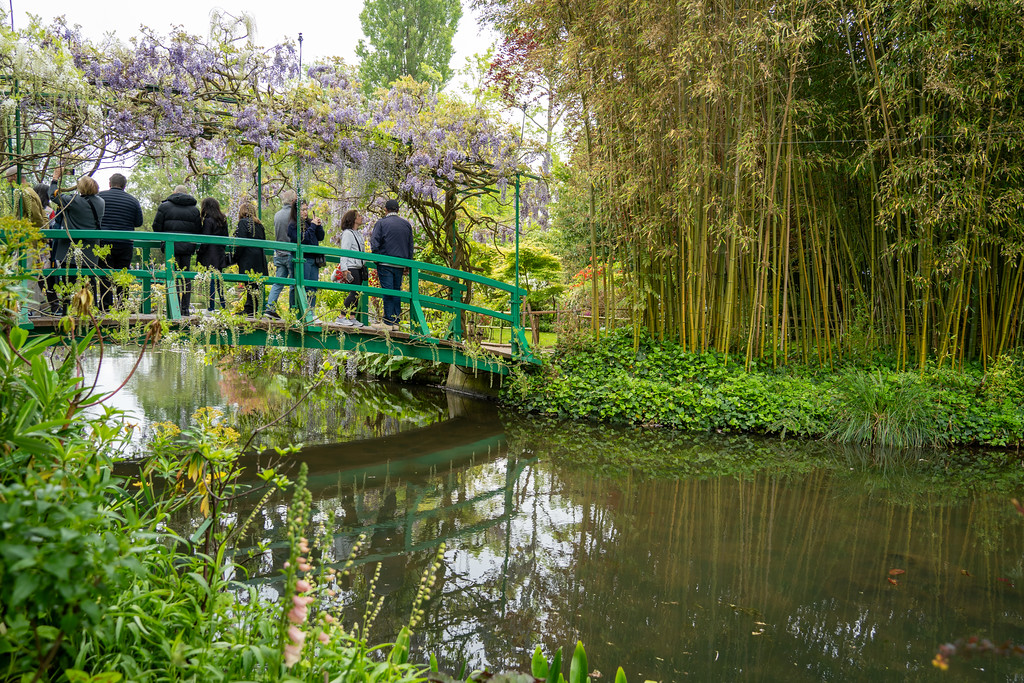
Note: Painting or sketching in the gardens is prohibited, so while you might feel tempted to create art inspired by Monet, kindly leave your supplies at home. However, feel free to take plenty of photos!
How Much Time to Spend at Monet’s House and Gardens
Of course, you can spend as much time here as you like, but a couple of hours should suffice. I dedicated around 2 hours to exploring the house and gardens, leisurely strolling through each garden twice. Guided tours often provide less time, making the advantage of visiting independently clear.
Other Activities in Giverny
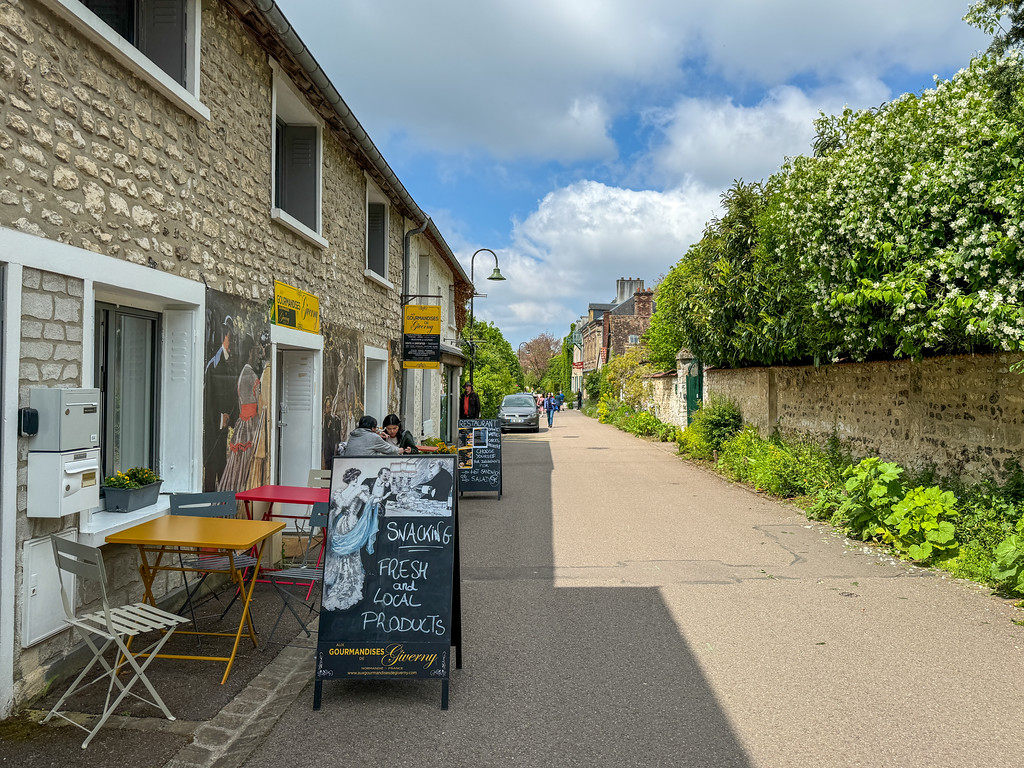
After you’ve enjoyed the gardens, consider browsing the gift shop before departing Monet’s House and Gardens. Then, take a leisurely stroll back into the village of Giverny where you can:
- Visit the Museum of Impressionisms, an art museum dedicated to the Impressionist movement featuring rotating exhibitions and another delightful garden.
- Grab lunch in the village – I found a delicious sandwich at Gourmandises de Giverny.
- Pay your respects at Monet’s grave, located in the cemetery behind the Giverny Church.
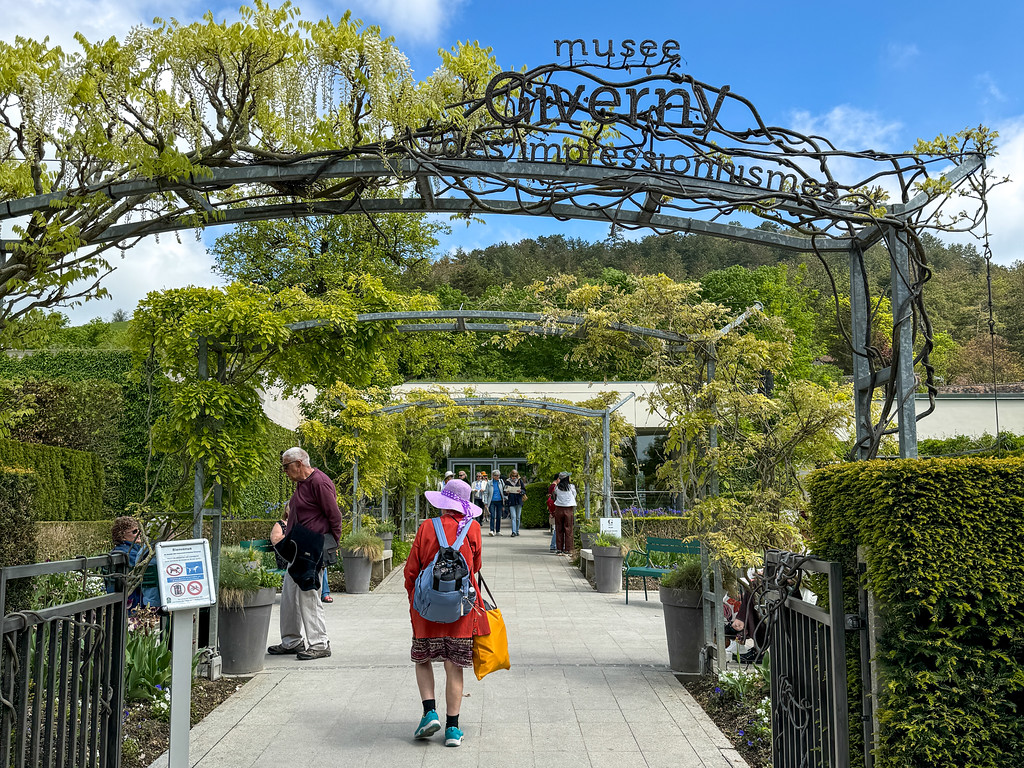
Return Train to Paris
Once you’ve taken in all that Giverny has to offer, you can head back to Paris by train. Again, check train schedules in advance, as there may be some gaps in the afternoon.
You’ll retrace your steps, first walking back to the parking area to catch the shuttle back to Vernon. There, you can either purchase a train ticket from the ticket counter or buy one using the Trainline app. The journey back to Paris via train is about an hour.
And that wraps up your day trip to Giverny!
An Ideal Giverny Day Trip Itinerary
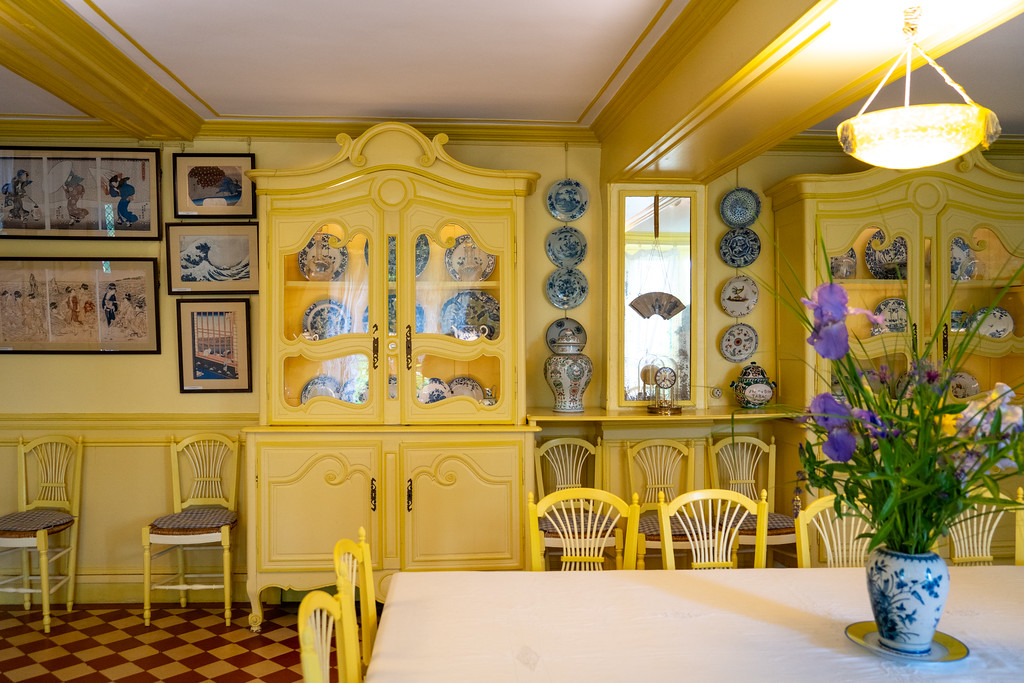
Here’s how my weekday trip to Giverny unfolded (note that train and shuttle schedules may vary on weekends):
- 8:14 a.m. – Train from Paris Saint-Lazare to Vernon-Giverny
- 9:04 a.m. – Arrive in Vernon
- 9:25 a.m. – Shuttle bus to Giverny
- 10:30 a.m. – Entry to Monet’s House and Gardens
- 10:30 a.m. – 12:30 p.m. – Explore Monet’s House and Gardens
- 12:30 p.m. – Lunch and exploration in Giverny
- 3:10 p.m.* – Shuttle bus back to Vernon train station
- 3:40 p.m.* – Train back to Paris
*If you prefer an earlier return, a train back to Paris usually departs at 1:50 p.m. on weekdays as well.
Giverny Tours from Paris
If you’ve made it this far and changed your mind about a solo trip, no problem! There are numerous guided tour options available from Paris, many of which also include visits to other sites or attractions.
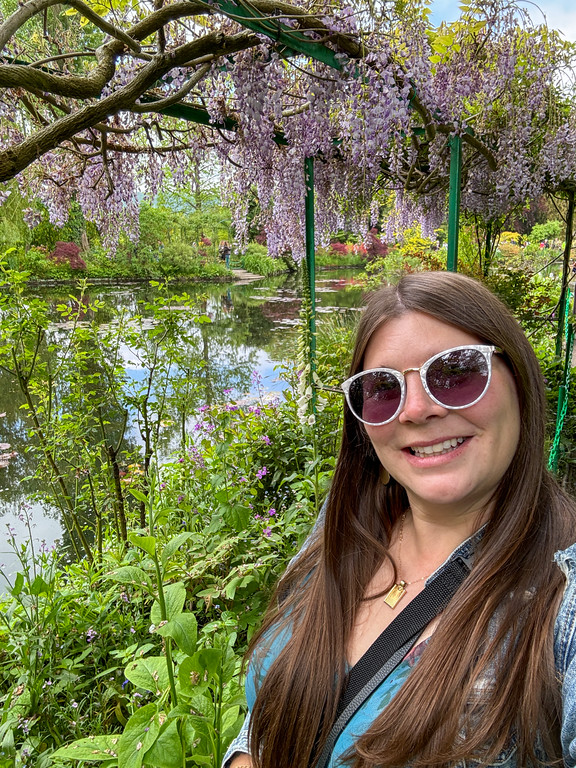
Consider some of these reputable Giverny tours:
Who’s ready to embark on a day trip to Giverny and witness Monet’s inspiration firsthand?

Amanda Williams is the award-winning blogger behind A Dangerous Business Travel Blog. She has traveled to over 60 countries on 6 continents, with her home base in Ohio. Amanda specializes in experiential and thoughtful travel through the US, Europe, and beyond, sharing tips based on her personal journeys and genuine experiences!



